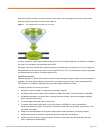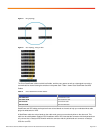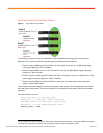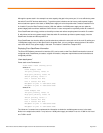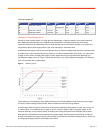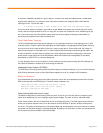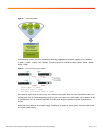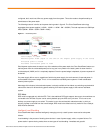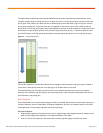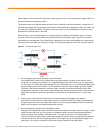
© 2012 Cisco and/or its affiliates. All rights reserved. This document is Cisco Public Information. Page 2 of 17
Cisco StackPower technology immediately produces savings by reducing the number of power supplies required
per switch and the number of outlets required in the wiring closet. Additional savings accrue from minimizing
energy wastage due to inefficiency of power supply operation at lower loads and reduction in cooling requirements
in the wiring closet. Cisco StackPower also eliminates the need for external power shelves, thus freeing up
additional space and power outlets in the wiring closet.
Cisco StackPower also allows the deployment of larger power pools by using an eXpandable Power System (XPS
2200). This system allows for a star topology which shares power with up to 9 switches. See Cisco StackPower
Topology section.
Cisco StackPower technology provides the following additional benefits:
●
Abstracts the location of a power supply from its physical location in a stack of switches, allowing for better
utilization of available power capacity
●
Maximizes the efficiency of power supplies - aggregated loads allow power supplies to operate at optimum
efficiency, considerably reducing power supply wastage over time
●
Provides or complements the power required for PoE+ to any port in a stack
●
Enables a scalable PoE+ infrastructure
●
Offers a pay-as-you-grow architecture, similar to the Cisco StackWise
®
technology
●
Offers improved reliability, availability, and efficiency via the eXpandable Power System (XPS) to up to nine
switches
●
Enables a “zero-footprint” redundant power system (RPS)
●
Offers greater redundancy, 1+N vs. 1:N redundancy with RPS
●
Allows off-lining of power supplies when extra capacity is available in the system
●
Helps achieve a higher mean time between failures (MTBF) due to improved efficiency
●
Lowers TCO by reducing the number of power supplies needed, the number of devices in the rack, the
amount of heat in the wiring closet, and the number of AC outlets required in the wiring closet
Technology Overview
The key aspect to the new Cisco StackPower technology is the way power is supplied and distributed to a switch
in the stack. A switch requires power to be provided at different voltage levels, such as 5V DC and 48V DC, and a
traditional power supply provides those voltages. These requirements make the power supply more complex, and
this complexity affects efficiency.
Cisco StackPower technology implies a new approach to power supply design and power distribution in a switch,
but its effects are most significant in a stack of switches.
The Cisco Catalyst 3750-X and 3560-X Series Switches are designed for power supplies that provide a single
power voltage. This approach simplifies the power supply design and allows aggregation of power, from power
supplies in a single switch and across switches in a power stack. Cisco StackPower technology creates a pool of
power that shares a common load consisting of all the switches in the power stack. This capability to manage
power as share resource is unique to a stack of switches that can operate as a single unit. Therefore StackPower
technology is available only on the Catalyst 3750-X switches.





